Fires in Pantanal, world's largest tropical wetlands, 'triple' in 2020
- Published
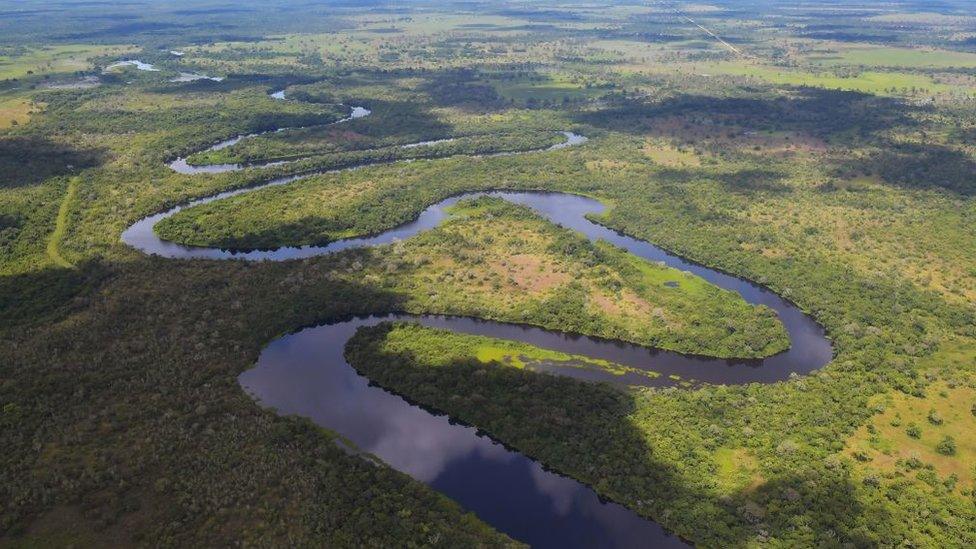
The Pantanal is the largest wetland on the planet located in Brazil, Bolivia and Paraguay
The number of forest fires in the Pantanal, the world's largest tropical wetlands, has tripled in 2020 compared to last year, according to Brazil's national space agency Inpe.
Inpe identified 3,682 fires, external from 1 January to 23 July in the region, an increase of 201% compared to 2019.
Thousands of species including jaguars, anteaters and migratory birds live in the 140,000-160,000 sq km area.
Last month was the worst June for fires in the neighbouring Amazon in 13 years.
The wetlands are located across Brazil, Paraguay and Bolivia and are one of the most biodiverse areas in the world.
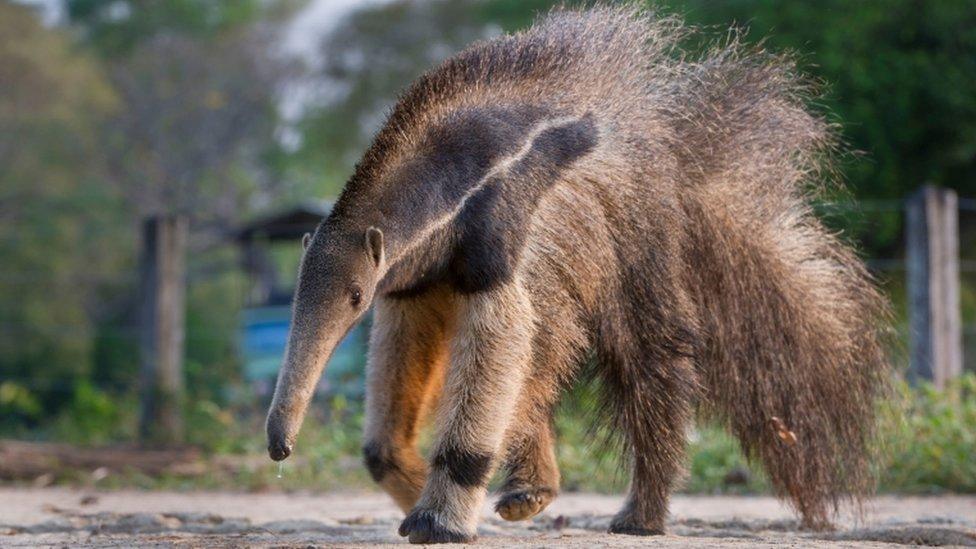
Giant anteater are one of the thousands of species in the Pantanal
Piranha, capuchin monkeys, green anacondas and thousands of plant species live in the basin which thrives off annual flooding following torrential rains.
A satellite map published by Inpe, external shows the fires currently burning in the Pantanal, collected using satellites that measure blazes larger than 30m long by 1m wide.
The 3,682 fires detected in the region so far this year are the highest number since records began in 1998. In the same period in 2018 there were 277 in the area in total.
Members of environmental network the Pantanal Observatory called the fires "a social danger since, in addition to the economic damage and the loss of biodiversity, fires cause respiratory problems, eye irritation and allergies," according to Brazilian newspaper O Globo.
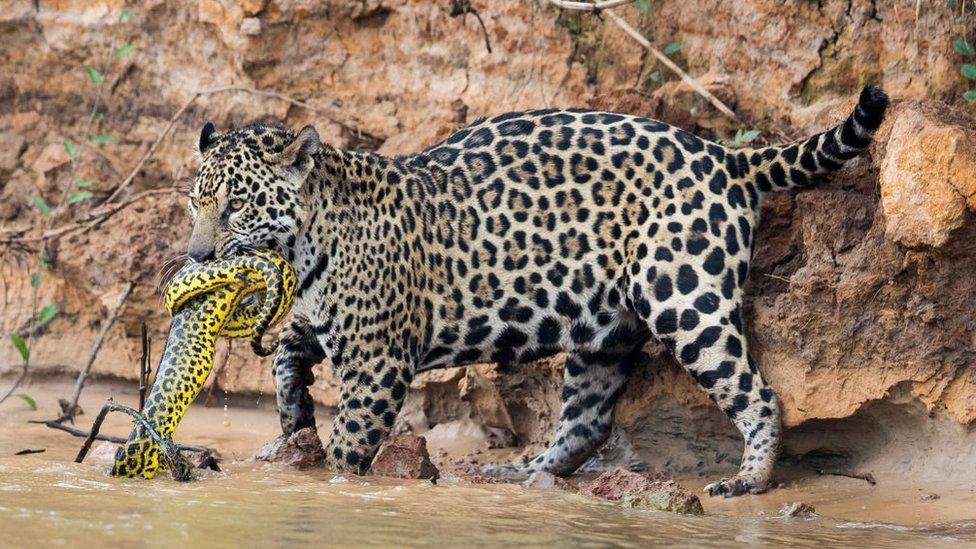
The Brazilian Pantanal wildlife boasts jaguars and anaconda
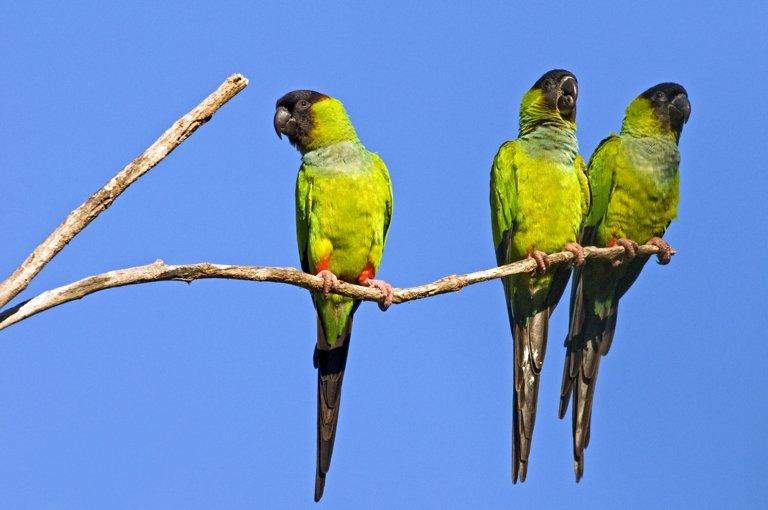
Black-hooded parakeets also live in the Brazilian Pantanal
The organisation said that in two days, around 7,000 hectares were burnt as the result of both "criminal activity" and "climactic factors", external.
Wildfires often occur in the dry season in Brazil but they are also deliberately started in efforts to illegally deforest land for cattle ranching.
In the Bolivian Pantanal, fighting the fires has been complicated by the coronavirus pandemic which limits the number of people who can safely tackle the blazes, Carlos Pinto of the organisation Friends of Nature Foundation explained., external
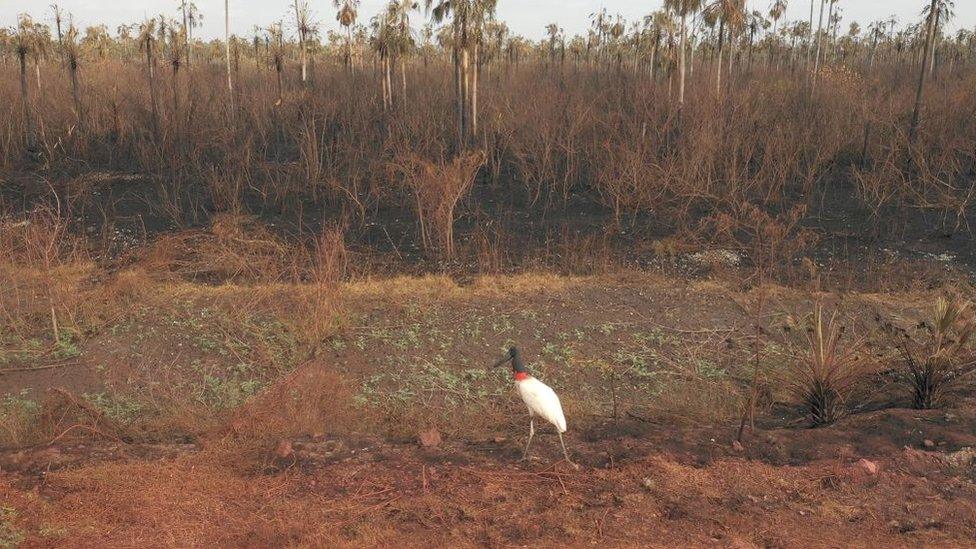
The Otuquis National Park, in the Pantanal area of Bolivia, was damaged in fire last year
The Pantanal Observatory says it is releasing radio broadcasts and video to inform local residents about the risk of fires.
Earlier this month President Jair Bolsonaro introduced a ban on fires in the Amazon region, to the north of the Pantanal, for the next four months.
Environmentalists routinely accuse Mr Bolsonaro, a climate change sceptic, of failing to protect the country's vast and valuable natural resources.
Last year he accused NGOs of starting fires in the Amazon.
Wildfire in the Brazilian Pantanal last year destroyed at least 50,000 hectares.
"It's extremely upsetting... to see this kind of devastation" - the BBC's Will Grant flew over northern Rondonia state
- Published1 November 2019
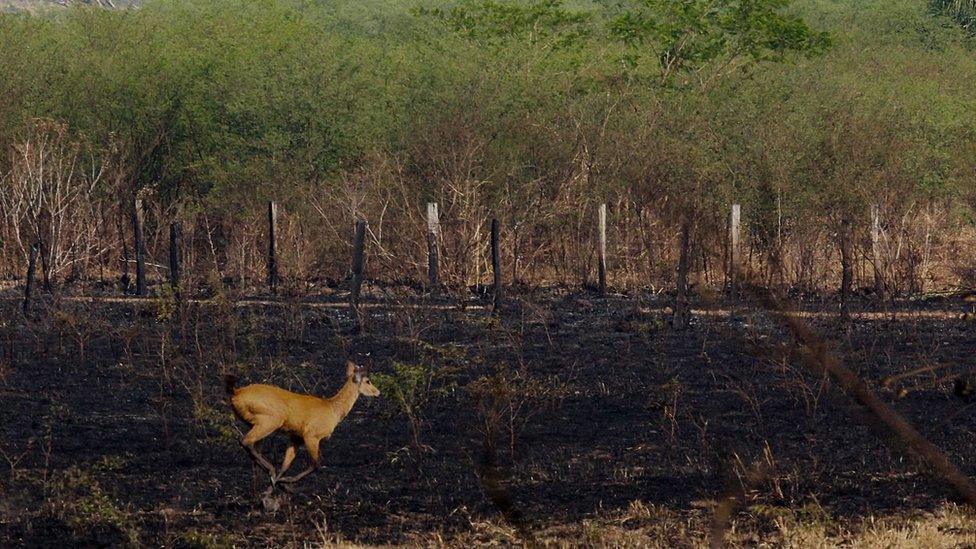
- Published24 September 2019
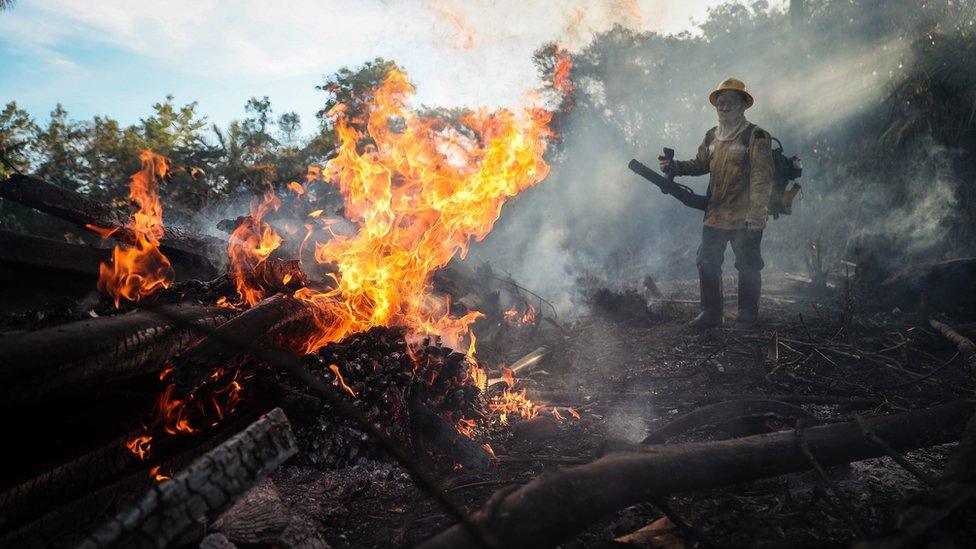
- Published24 August 2019
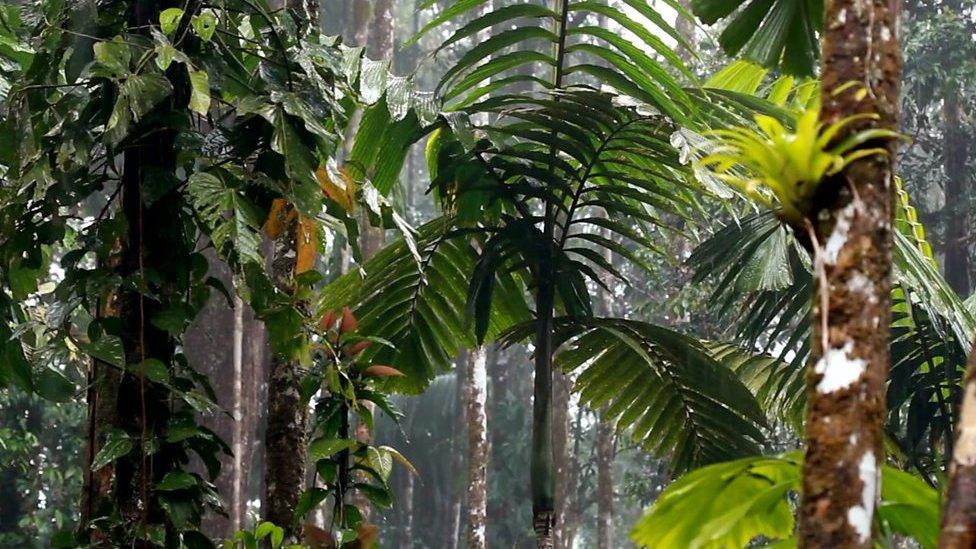
- Published25 August 2019
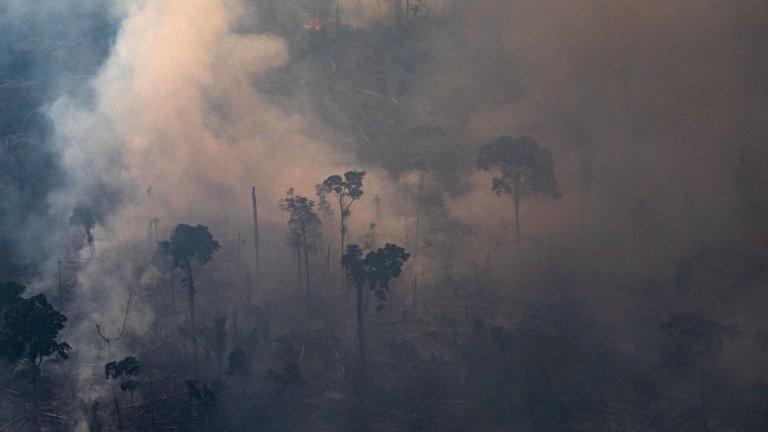
- Published21 August 2019
